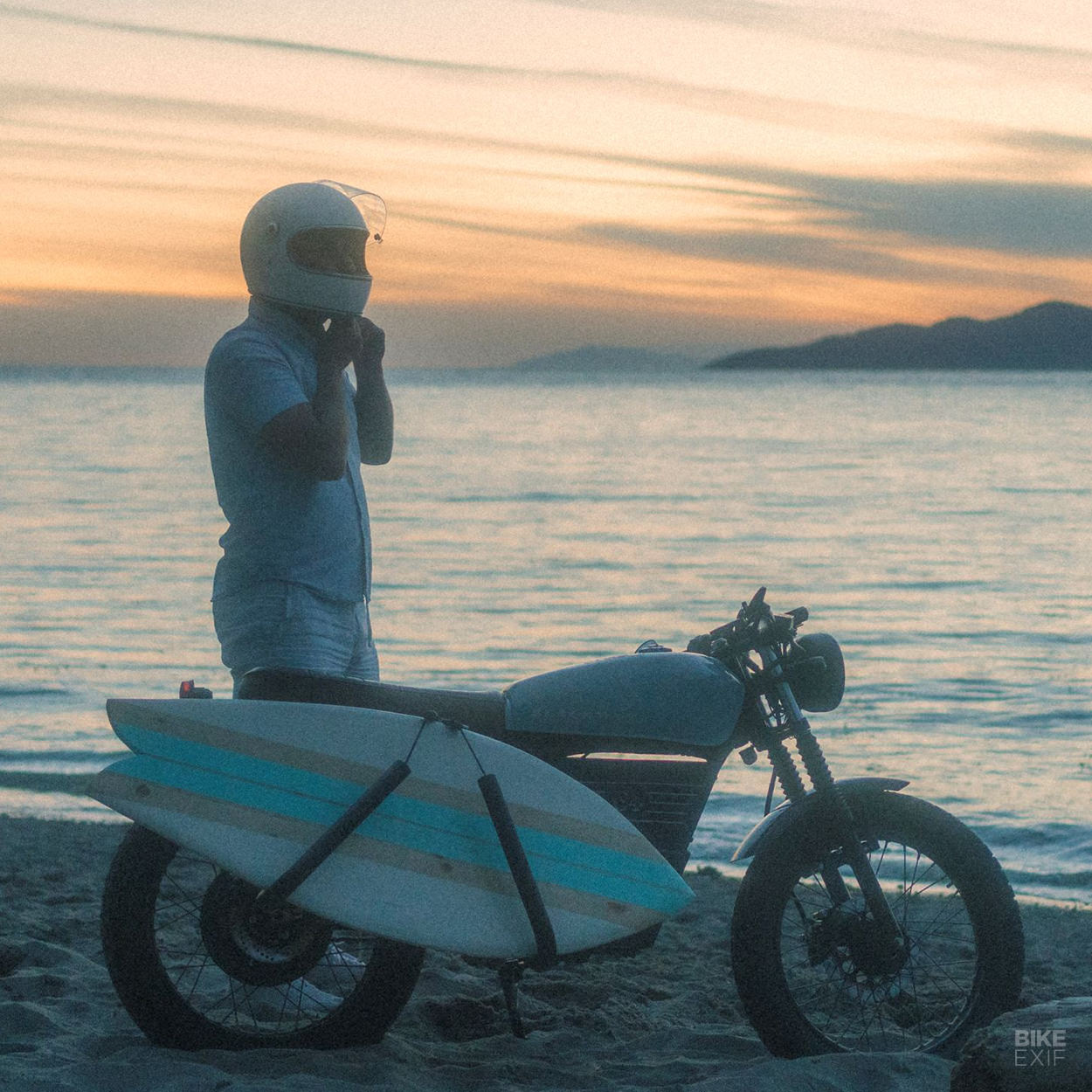 It’s a singles party this week: we’ve got a spunky Honda XL350R scrambler, a Kawasaki AR80 cafe racer, a Kawasaki KX100 land speed racer, and an intriguing single-cylinder Buell project. Plus Beachman releases a new e-bike.
It’s a singles party this week: we’ve got a spunky Honda XL350R scrambler, a Kawasaki AR80 cafe racer, a Kawasaki KX100 land speed racer, and an intriguing single-cylinder Buell project. Plus Beachman releases a new e-bike.
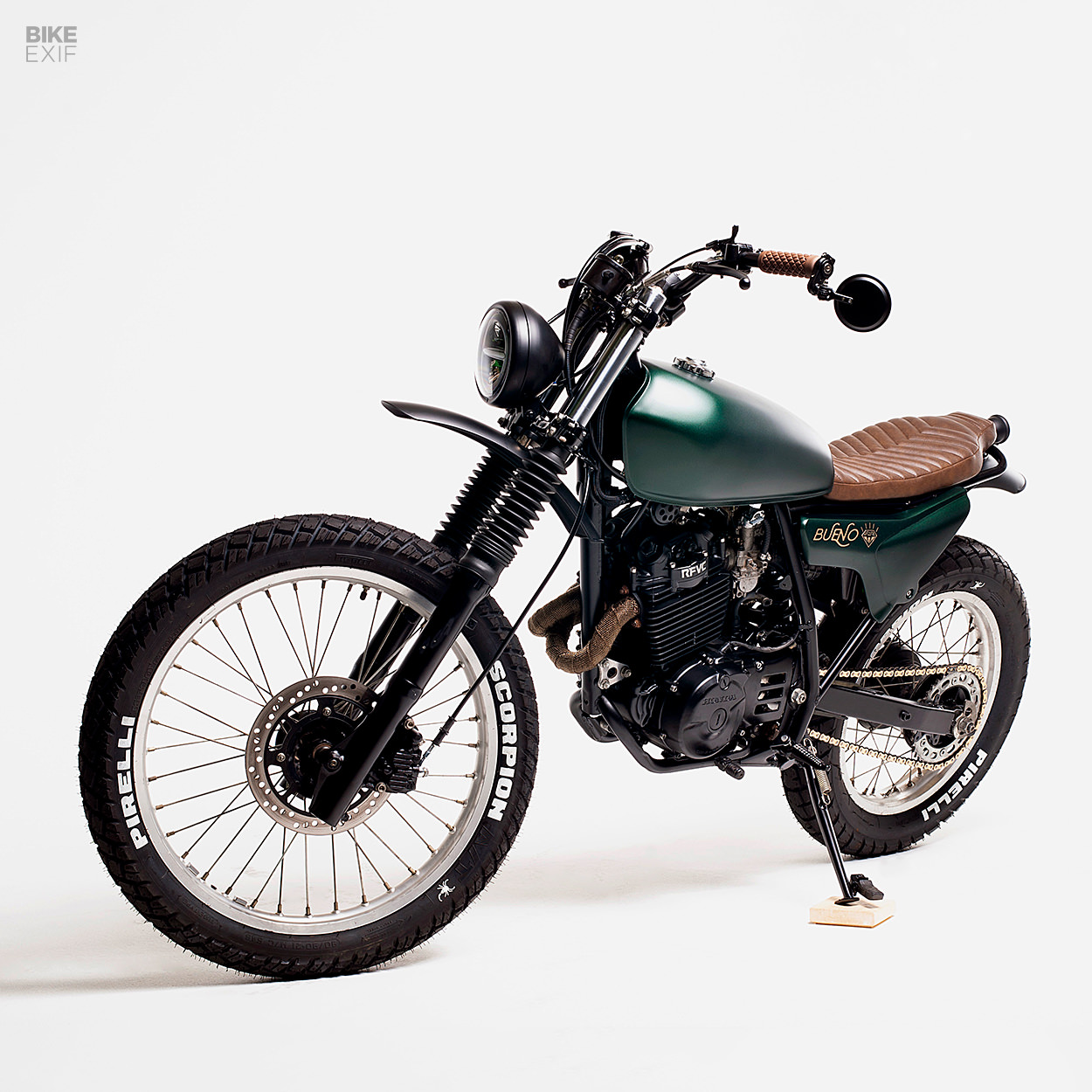
Honda XL350R by Bueno Co. Based in Fredericksburg, Virginia, USA, Nick Ghobashi is a freelance photographer who has turned his hand to custom bikes. And judging by this plucky 1984 Honda XL350R scrambler, he’s having a ton of fun.
The bike needed a proper once over before Nick could start changing things—so it got a full tune up, right down to new steering and wheel bearings. “I had to make a new retainer ring for the rear wheel bearing,” says Nick, “as they are non-existent for this year of Honda XL models.”
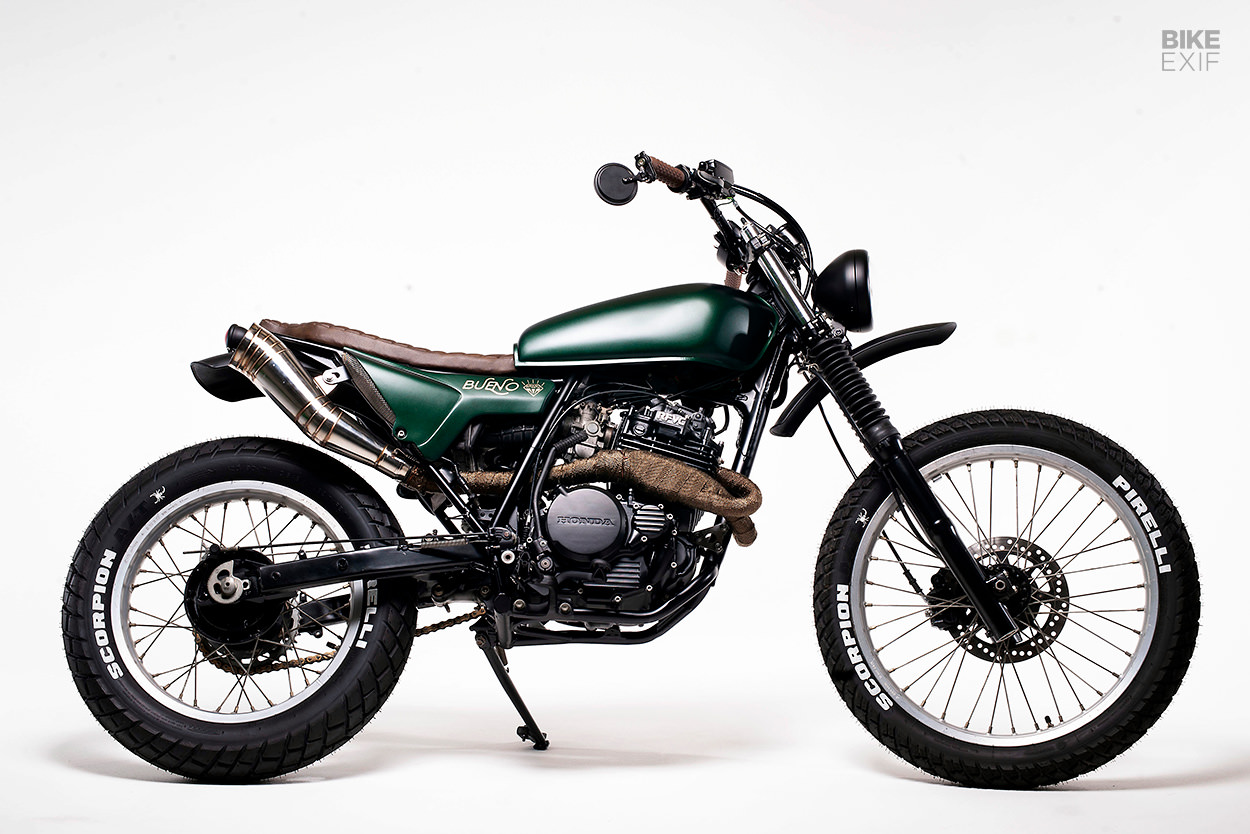
The frame was de-tabbed, the rear end was cut-and-looped, and subframe supports were welded in, before everything was powder coated in satin black. The engine was repainted too, and all the fasteners replaced with stainless steel items. Nick overhauled the suspension too, stiffening it up at both ends.
The bodywork’s a mixed bag. Nick sourced an aftermarket fuel tank and modified it to fit, then formed a fiberglass seat pan, which was then padded and upholstered in chevron-style pleating. “It was made in a classic ‘cobra’ shape, inspired by old choppers and bobbers I grew up around,” he tells us.

To build the new side covers, Nick cut up the originals, grafted on some fiberglass, and added stainless steel mesh. A pair of bobbed aluminum fenders finish things off, with the front headlight and fender sharing a custom mount. LED lighting at both ends keeps things street legal.
Other changes include modified exhaust headers with an off-the-shelf muffler, modified wiring, and new handlebars, grips and foot pegs. Nick fabricated a host of smaller brackets for the cockpit too—like a new speedo mount, and a tiny control panel to hold custom switches.
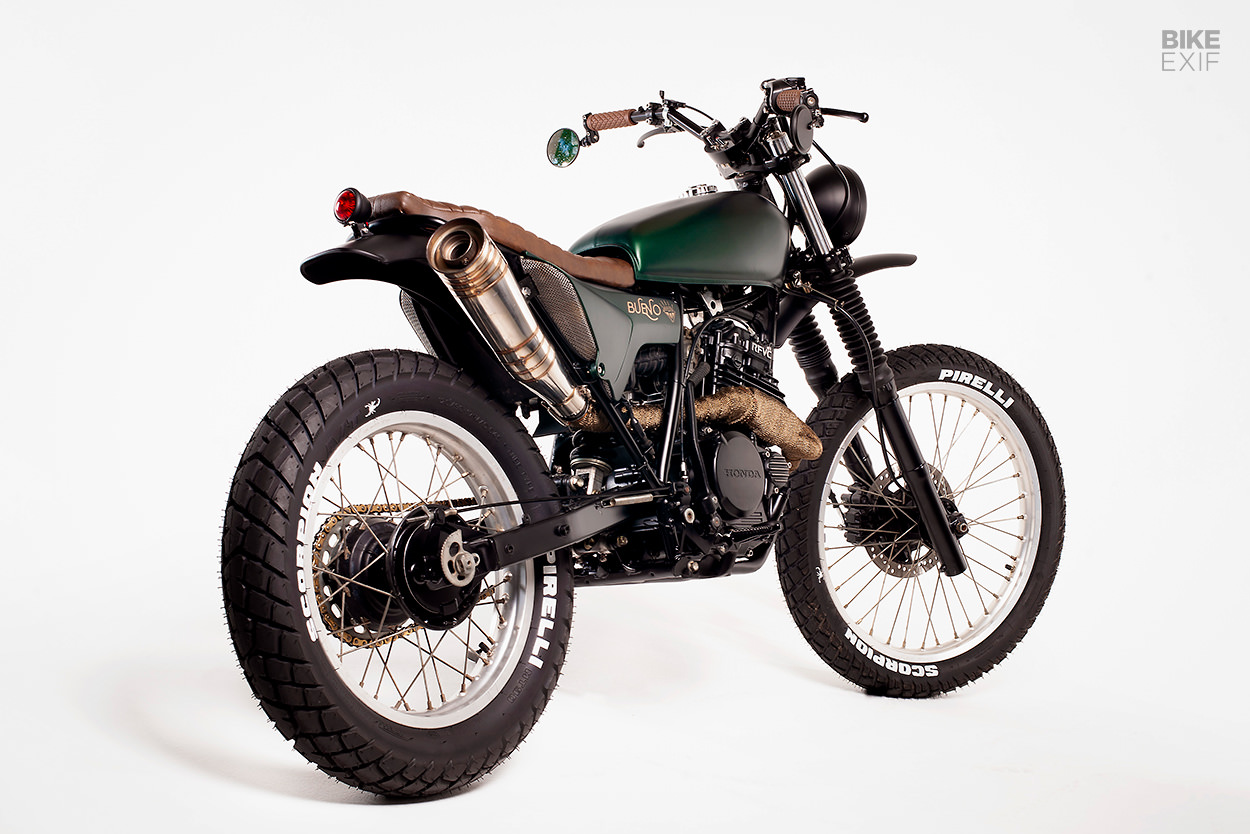
The Honda’s finished off in a metallic satin British racing green paint job, with the lettering on the tires inspired by motor racing. This little thumper is pared-down, full of attitude, and looks ready to rip. [Bueno Co.]
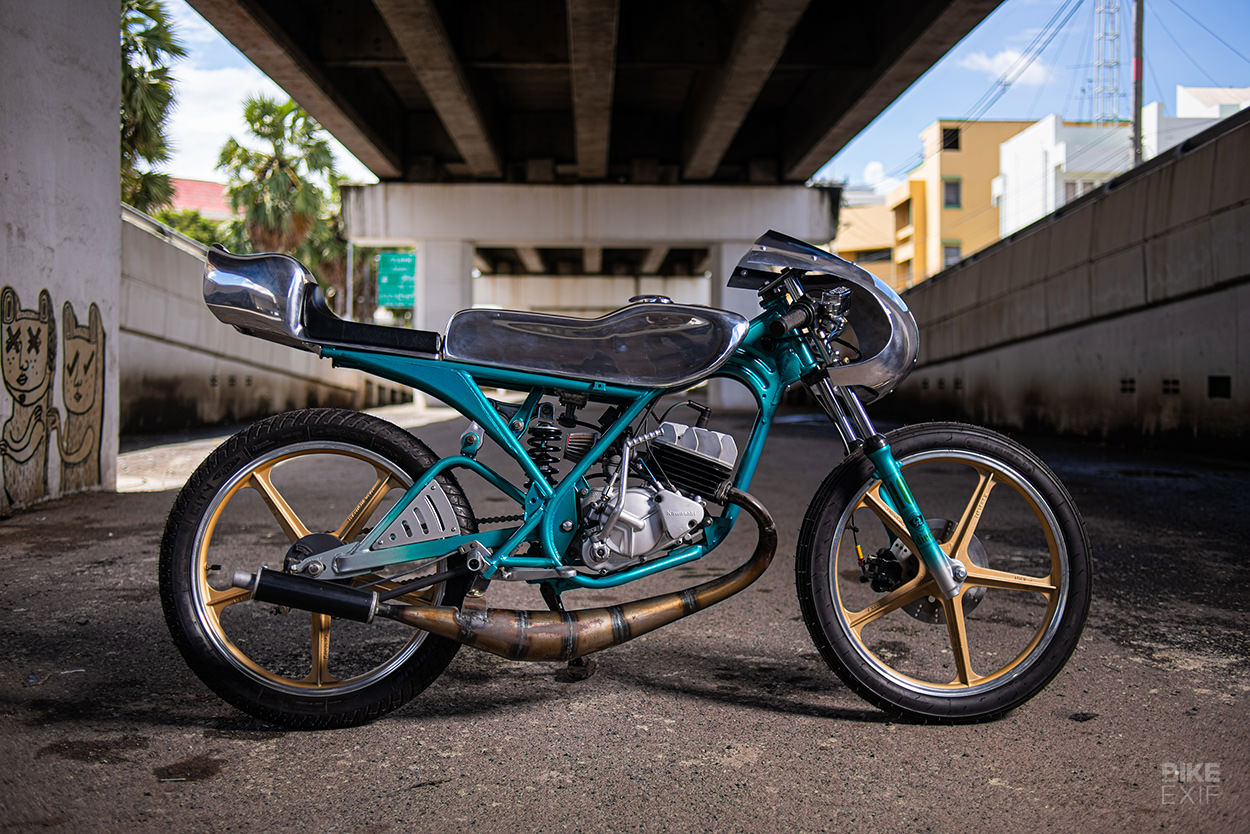
Kawasaki AR80 by Omega Racer The Bangkok-based parts shop and custom house Omega Racer celebrates its 10th birthday today. So founder Markus Pintzinger decided to celebrate with a special build: a pint-sized 1982 Kawasaki AR80 cafe racer, with a donor that cost just $100.
Omega Racer specializes in custom parts for bikes like the Kawasaki W650 and W800, Yamaha SR400, classic R-series BMWs and Sportsters. “Our workshop doesn’t usually make parts for the AR80—the market is tiny and the owners will hardly spend hundreds of dollars on custom aluminum parts. So, from a business perspective, choosing this bike was probably not the most logical or rational decision.”
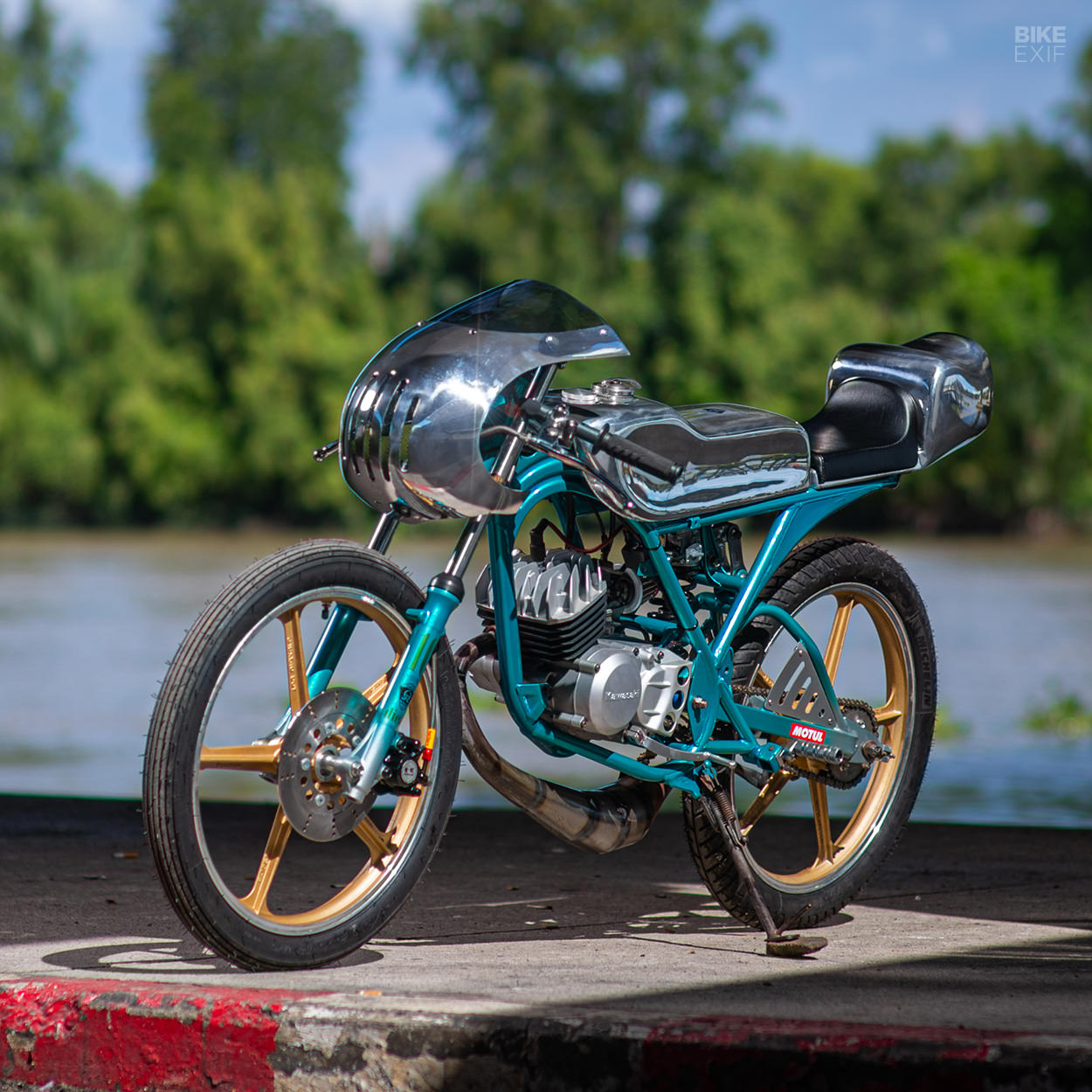
“In a way, this bike represents ‘heart over function’ for me. It’s not just a bike to promote my business and showcase the amazing fabrication skills of our team, but for me it’s also a great joy to express my creativity and a personal satisfaction to bring a heap of rusty metal back to life.”
The Kawasaki was in pretty rough shape, so Omega Racer rebuilt the motor, soda blasted the engine and frame, and then sent everything to Cog’n’Roll in Bangkok for powder coating. Markus opted for a tropical green hue on the frame; “very fitting for Thailand and Kawasakis.”
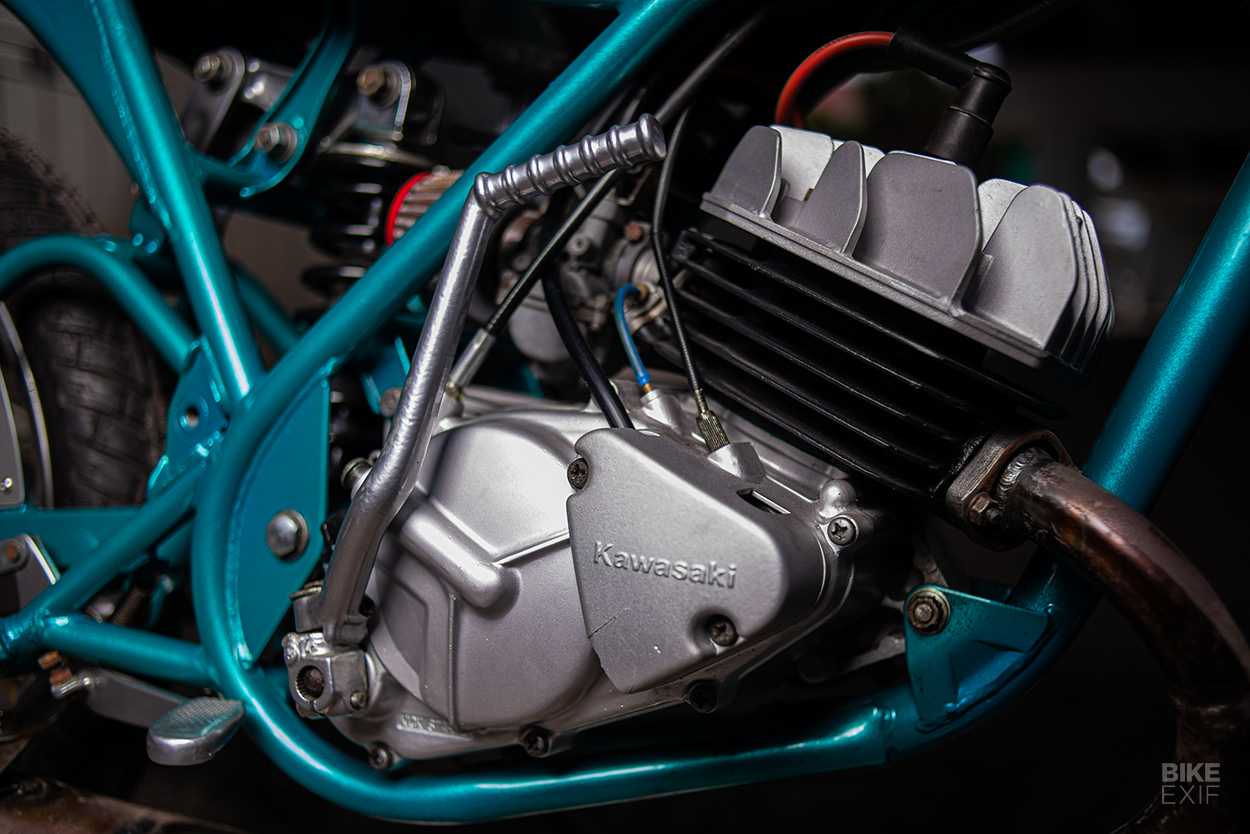
The donor bike came with non-OEM spoked wheels, but the originals are rare and expensive—so the crew sourced a pair of replicas. Thanks to the new wheels, a disc upgrade could be done too, even if the AR80 isn’t quite fast enough to need it. The rear shock was beyond repair, so Markus swapped it for a new one from NOS.
Omega Racer took inspiration from the 50 cc Italian race and street bikes of the late 60s and 70s for the bodywork. “We just love these bikes, sporting super long and narrow tanks, tiny seats and huge attitudes,” explains Markus.
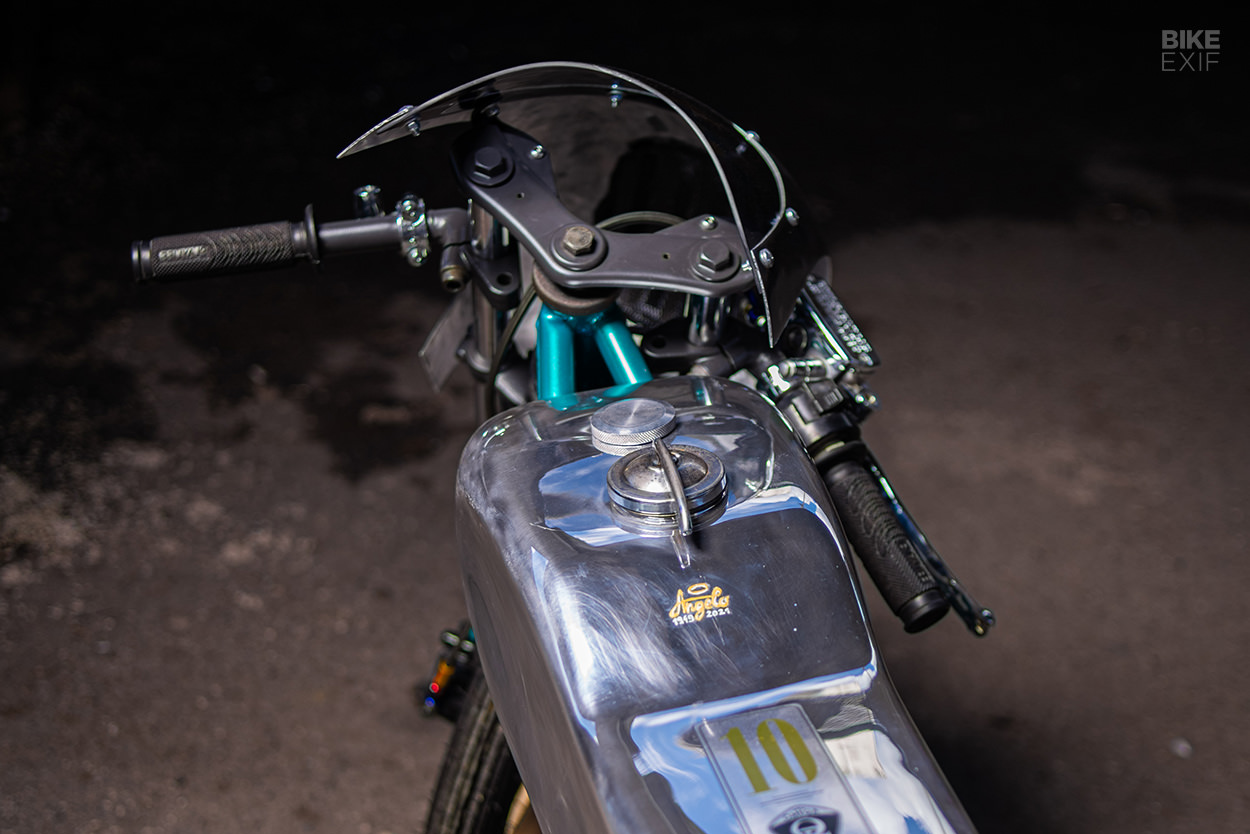
Each part was sculpted with foam, then taken to the shop’s go-to fabricator, Korn, to form out of aluminum. Keen eyes will spot two caps on the tank—that’s because it has fuel and oil reservoirs inside. The upkick on the ducktail at the back is a neat touch too, and a slotted design motif is echoed on parts like the swingarm braces, steering neck and front fairing.
There’s an extra detail on top of the tank: a tribute to a friend of the shop’s, Angelo, who sadly passed away earlier this year.
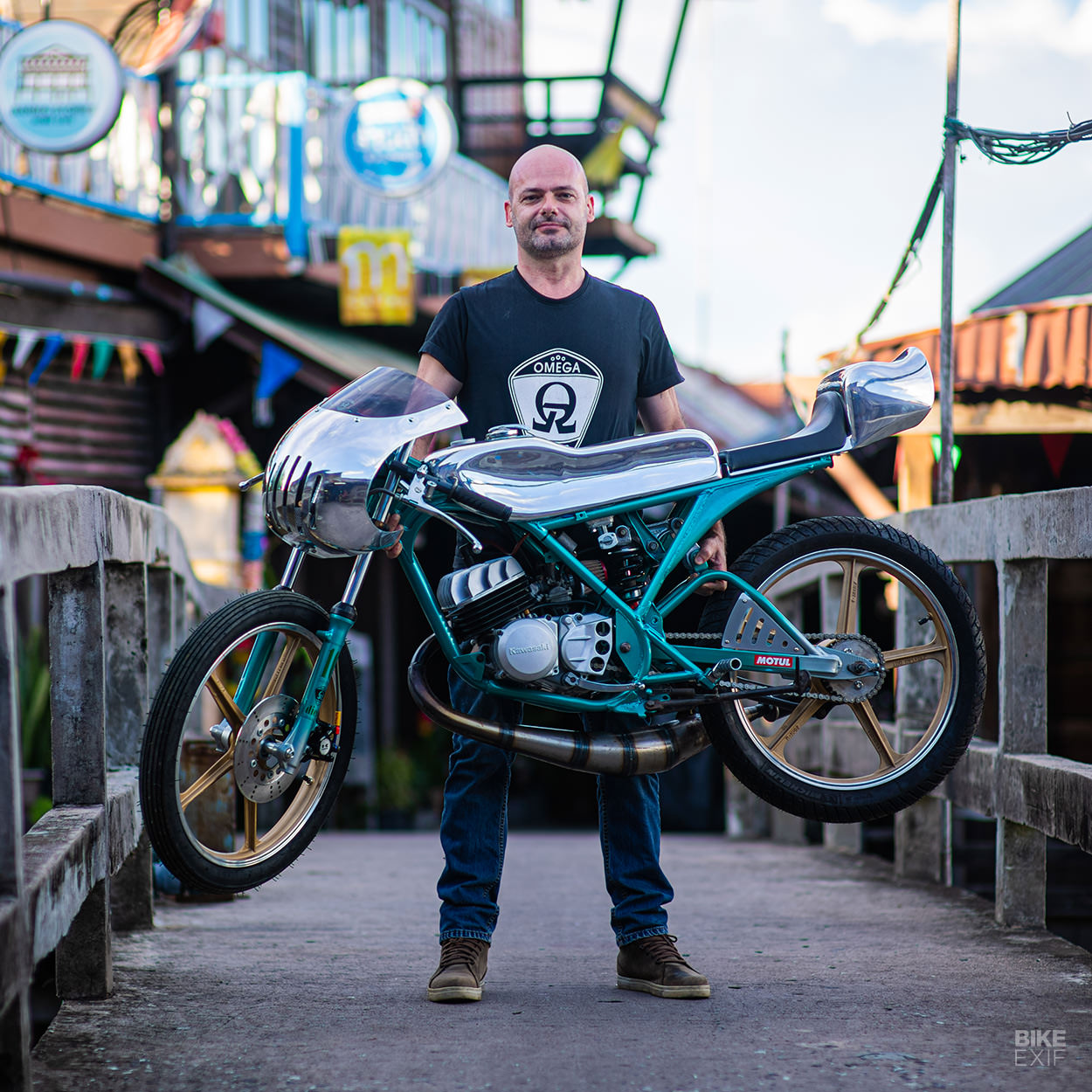
This mini-cafe has now gone down in weight from 80 kilos to around 48, so it’s been dubbed Cavalleggero, which is Italian for ‘light cavalry.’ “It seemed like an apt name for such a lightweight, but slightly horsepower-deficient, bike,” quips Markus.
That’s quite the tenth birthday present. Happy birthday, Omega Racer! [Omega Racer | Images by Thanuthong Jariyatham]

Kawasaki KX100 land speed racer by Mikey Hanrahan 24-year-old Mikey has spent the last five years on what he calls his science experiment’—building and fine tuning this low-slung Kawasaki KX100 to compete at the Bonneville Salt Flats and El Mirage. And it’s exactly the sort of project we can get behind.
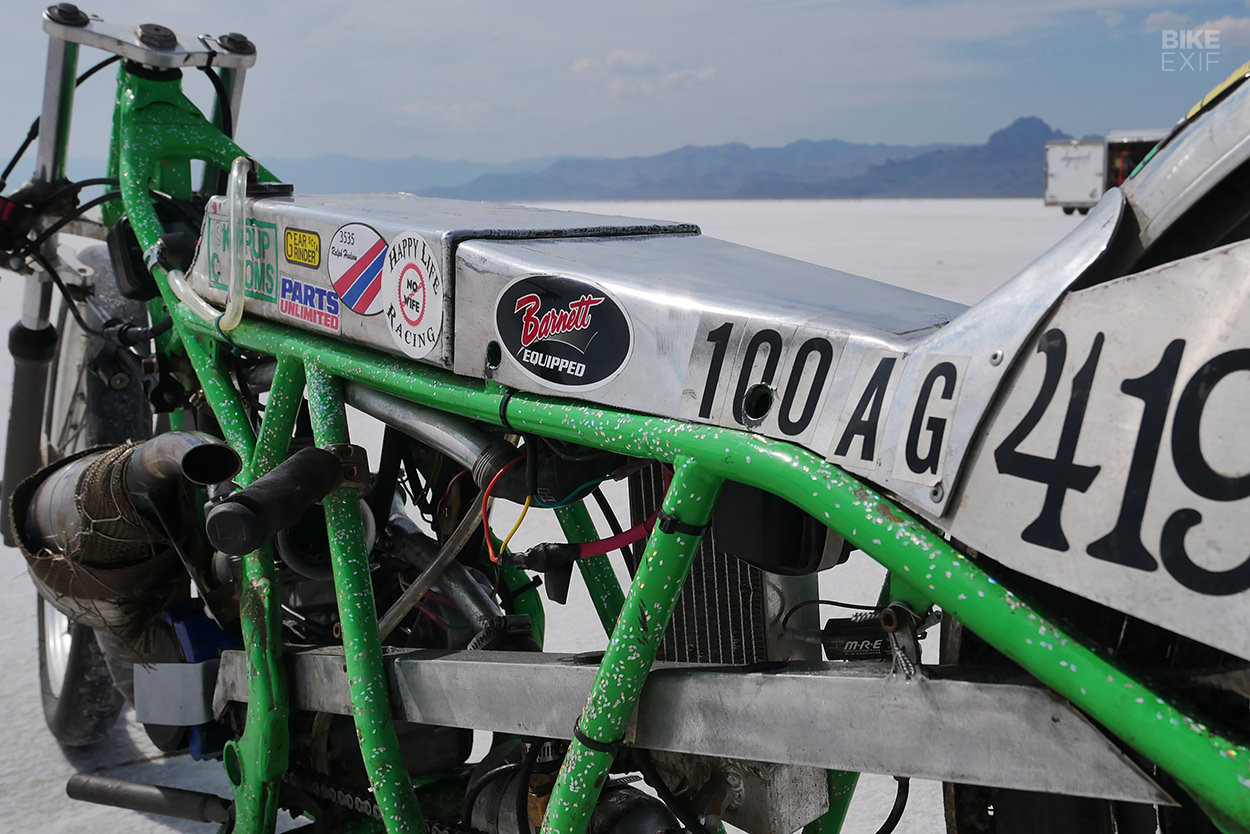
Starting with a 1998 KX100, Mikey did all the work himself, in his home garage. It started out as a lowered and stretched dirt bike, but then he decided to go all in and fabricate a purpose-built hardtail rear triangle for it. It now sits 14” lower, and has been stretched by two feet.
Up front are a set of Yamaha PW50 forks, running with custom springs and held by custom yokes. Up top is the bare minimum of hand-shaped aluminum bodywork. The riding position is dedicated, with impossibly low clip-ons and rear sets hung off the rear frame gusset.
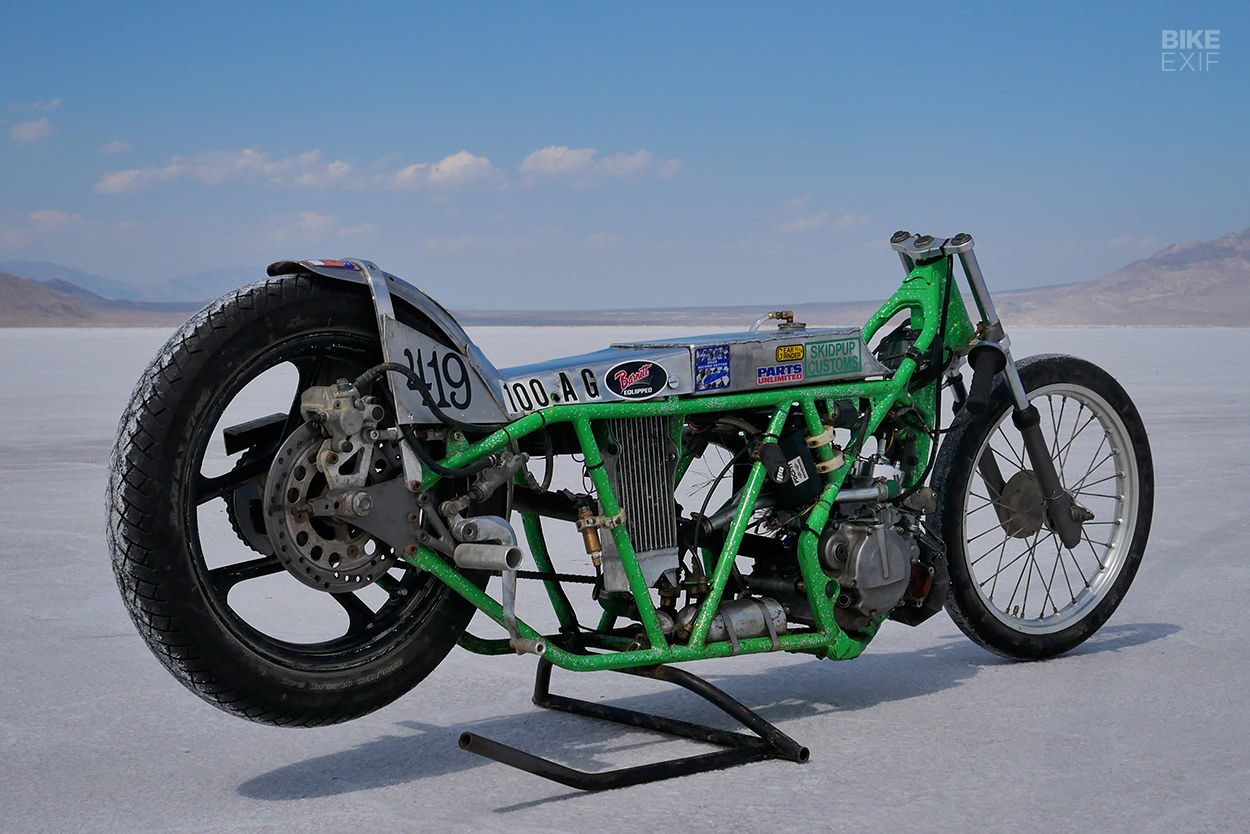
Mikey built the engine with the KX bottom end, and a 2014 KX top end with bigger ports, an air-shift kit, a 32 mm Mikuni flatslide carb, and a hand-made exhaust system. He also “removed all the parasitic parts of the motor,” so there’s a total loss electronic system, an electric water pump, and no more kick start assembly.
Mikey’s science experiment worked. His Kawasaki now holds records in the ‘special construction non-streamlined on gas’ class at El Mirage (112.5 mph) and Bonneville (103.1 mph). [Mikey Hanrahan]
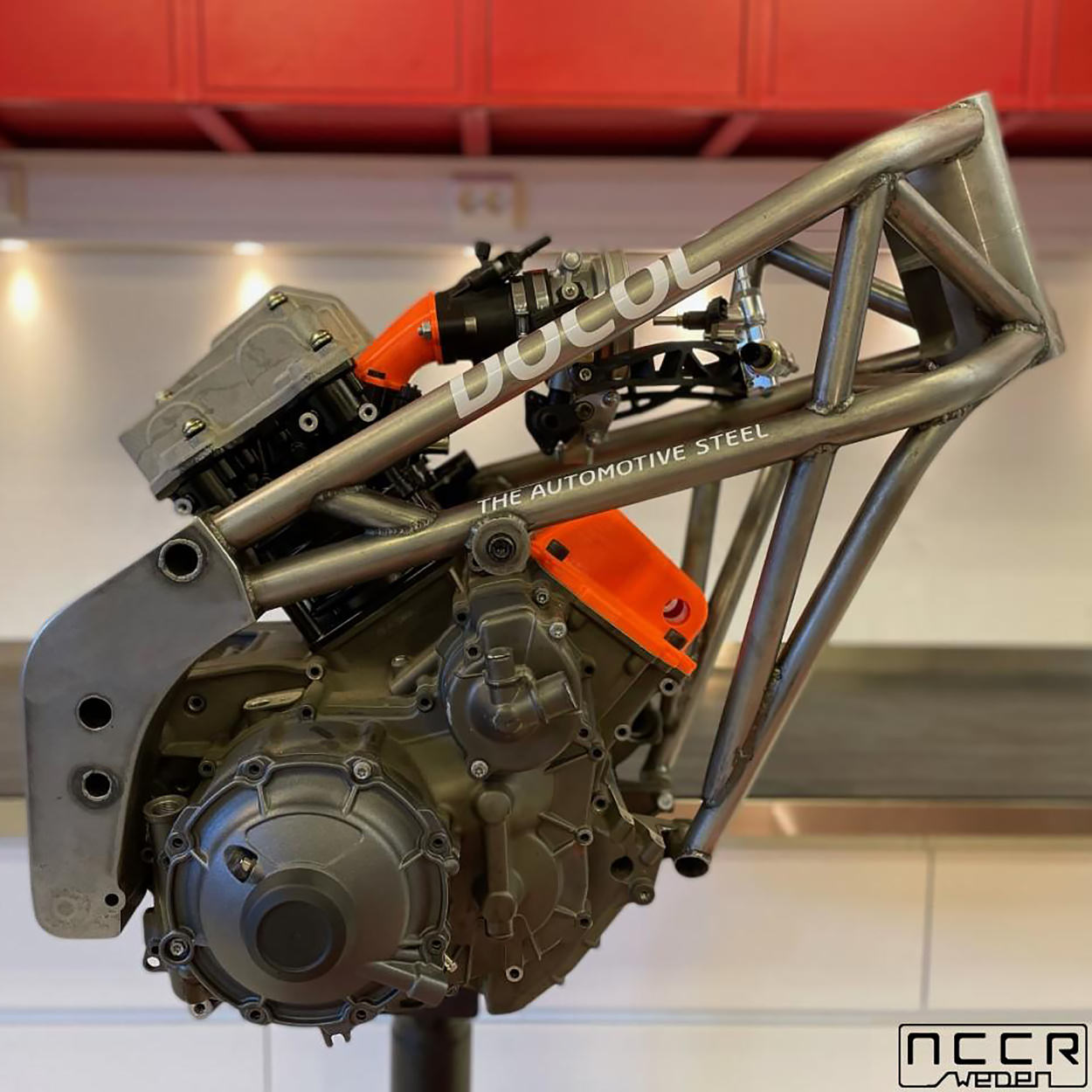
NCCR’s Buell Super Single project NCCR SportTwins is a Swedish racing and engineering company with a long history of building, tuning and developing Buell-based race bikes. Now they’re working on something truly interesting: a Buell ‘super single’ motor.
NCCR took inspiration from Ducati’s legendary Supermono, where the rear cylinder was removed, and a pivoting lever and connecting rod installed in its place as part of a counter balance system. But NCCR’s single doesn’t use a Ducati 888 motor. Instead, they’ve based their super single on the Rotax Helicon 1125 and EBR 1190 motors.
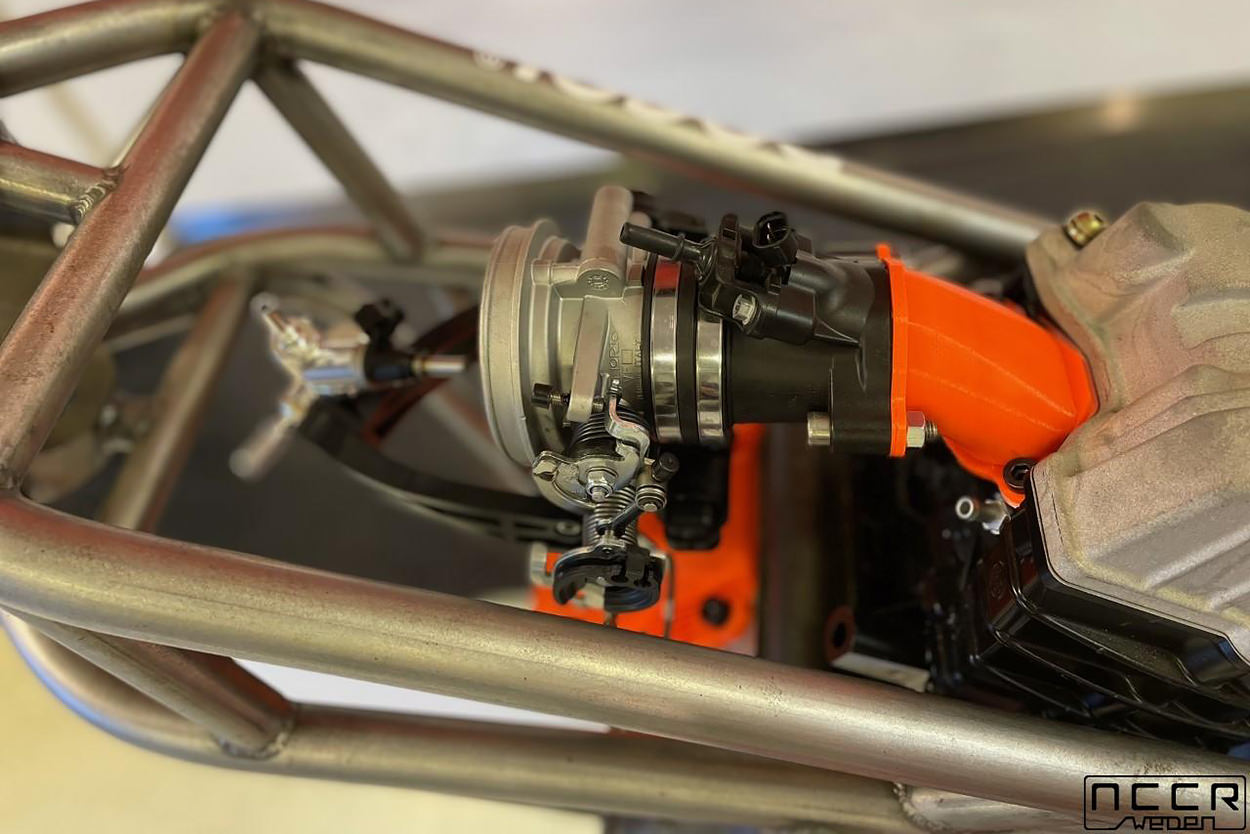
They’ve removed the front instead of the rear cylinder, for a plethora of reasons. NCCR say it improves ground clearance, narrows the bike’s silhouette and optimizes the airbox positioning, among other things.
The new motor has a capacity of either 562 or 595 cc, with big bore options from 660 to 700 cc. It’s being designed to work with a fuel injection system, but plans are to offer a carb’ed version too.

NCCR think the motor would be ideal for an enduro bike, so that’s what they’re currently working on. The prototype’s goal weight is 160 kilos [353 lbs], with a power output of 70 hp. It’ll be built for distance, with a rally-style fairing and mounting points for luggage.
And if that doesn’t tickle your fancy, NCCR reckon the motor will be perfect for a track racer too. [NCCR | Via]
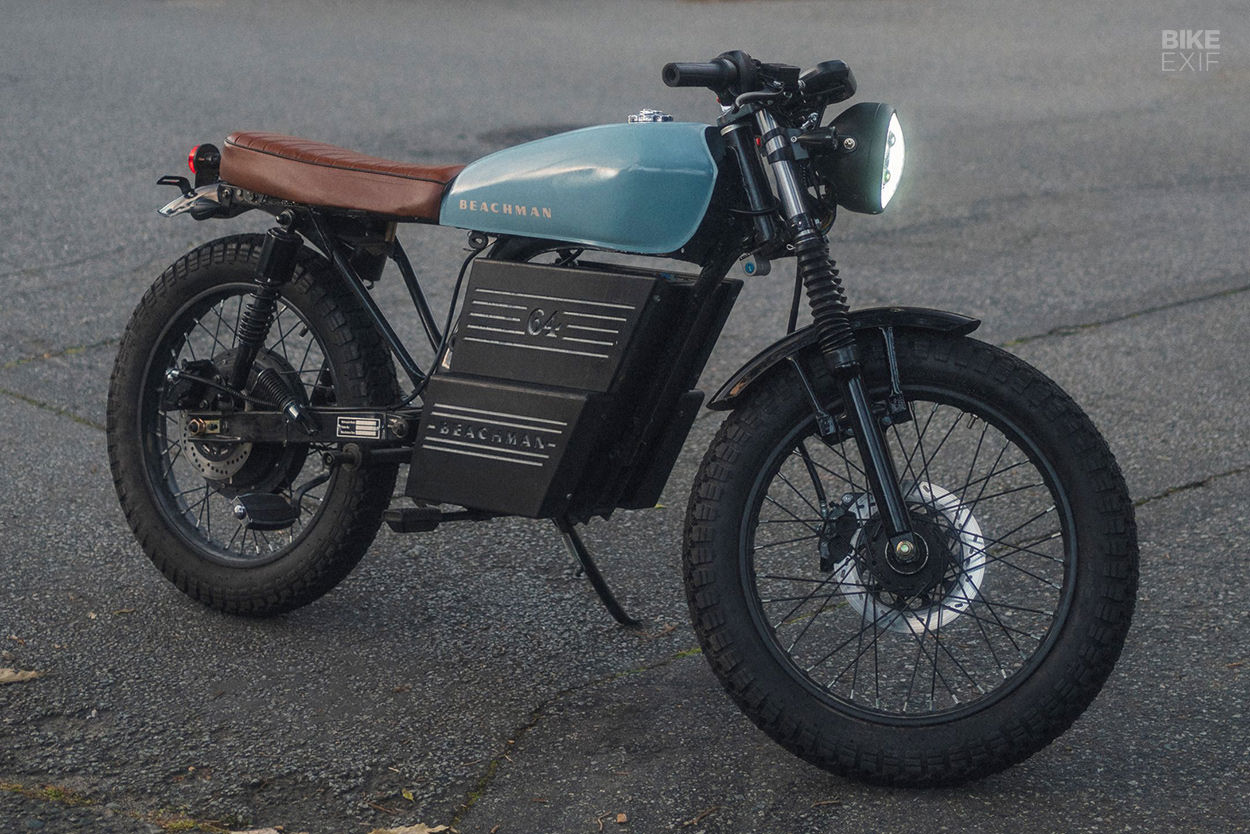
Beachman ’64 electric bike Beachman is a Canadian startup founded by Ben Taylor and Steve Payne, and they’re all about classic-looking electric bikes. You’re looking at the ’64: a new model from Beachman that’s just about to wrap up a round of crowdfunding, but has already exceeded its goal.
“With an eye on the past, we are working to combine the rugged and stripped-down styling of 60s cafe racers, with the lighthearted fun and carefree convenience of a 70s Honda Cub,” says Ben.
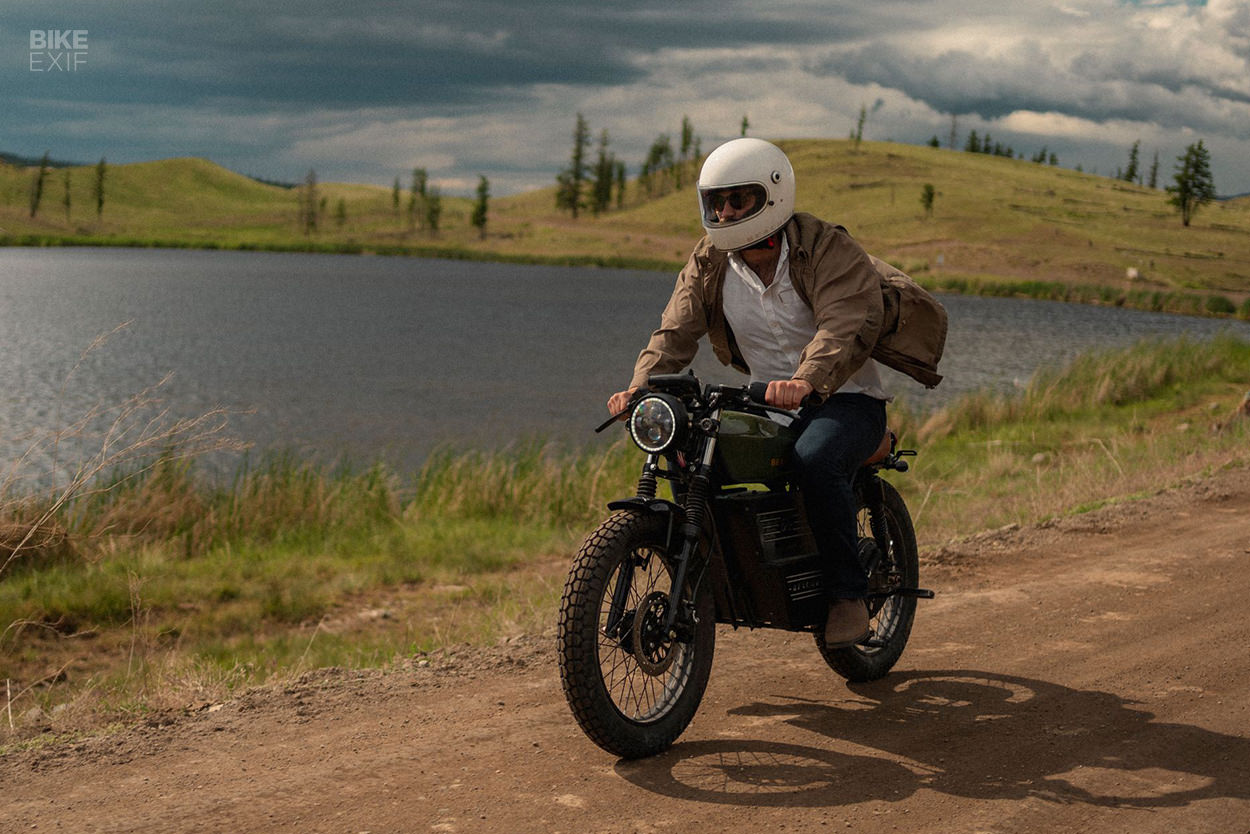
The ’64 uses a frame design that’s based on the Honda CB125, although this prototype was built with a similar Kawasaki KZ200 frame. It has off-the-shelf forks and shocks, along with 18” wheels with disc brakes. There’s a faux classic Yamaha-style fuel tank up top to cover the electronics, and a swappable bench seat out back.
It’s powered by a 72v brushless hub motor, with a removable 40Ah battery that can charge to 80% in three hours. It weighs 220 lbs and is capable of 60 km/h, but can be specced as an ‘e-bike’ too, with pedals and a limiter to keep it under 32 km/h. The range is quoted as 90 km on a full charge.
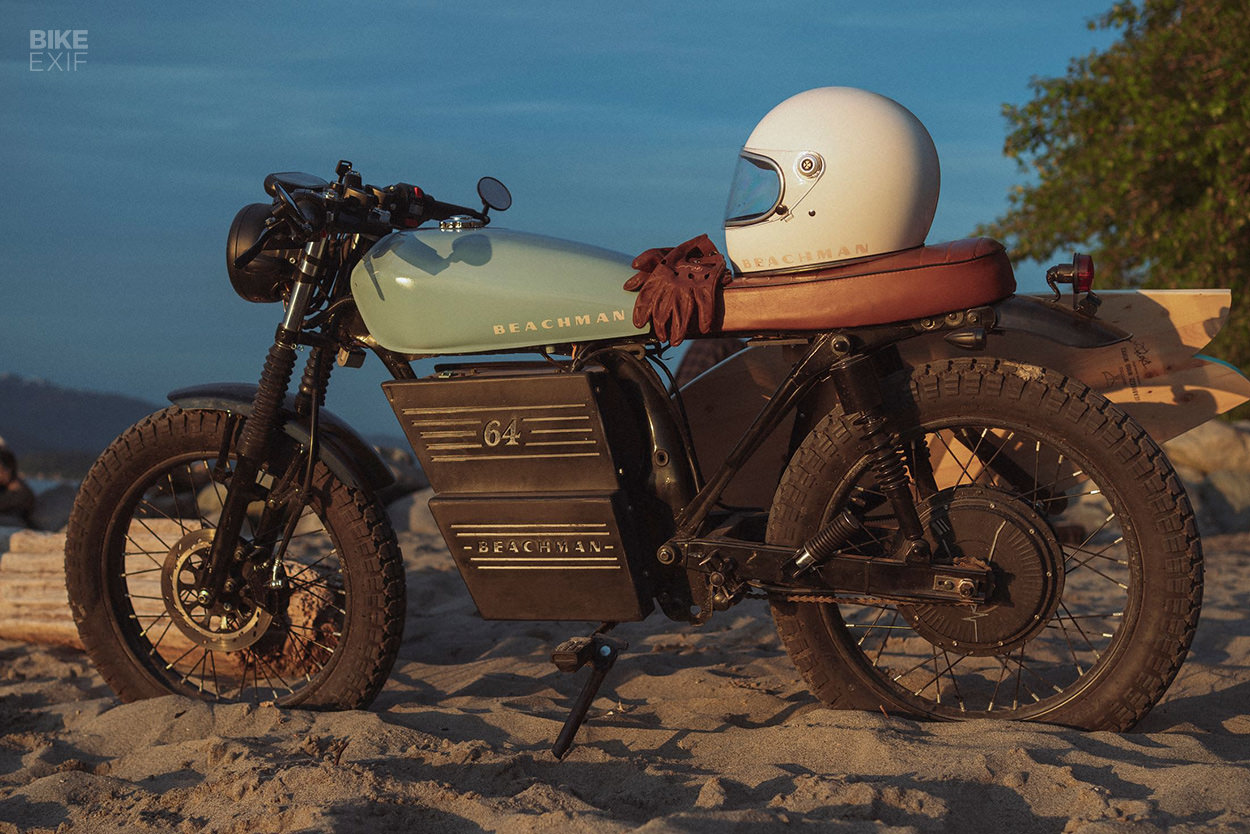
“We could make faster bikes,” says Ben, “but with the current state of electric bike technology, you have to choose two benefits from speed, range, and affordability. So we chose range and affordability, in order to make it a fun everyday bike for new and old riders alike.”
A ’64 will set you back $4,200 in Canadian dollars, and is only available in Canada for the time being, with plans to expand to the US in 2023. Would you be tempted? [Beachman]
